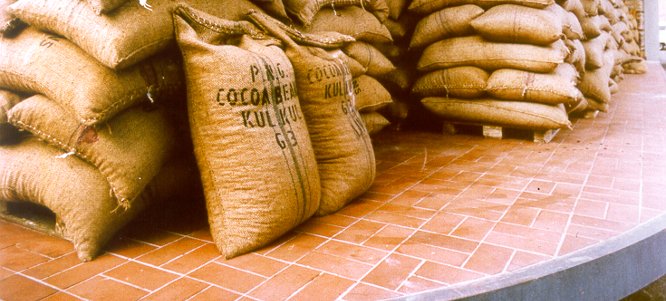Study of the chemical, physical and organoleptic parameters to establish the difference between fine and bulk cocoa
DURATION: |
5 and a half years after 18 monts extension |
LOCATION: |
ECUADOR, PAPUA NEW GUINEA, TRINIDAD AND TOBAGO, VENEZUELA |
NATURE OF PROJECT: |
Research and Development |
ESTIMATED TOTAL COST: |
US$ 1,666,570 |
FINANCING COMMITED BY CFC: |
US$ 839,223 |
CO-FINANCING: |
US$ 205,837 |
COUNTERPART FINANCING: |
US$ 617,510 |
PROJECT EXECUTING AGENCY (PEA): |
Instituto Nacional de Investigaciones Agropecuarias (INIAP) |
PROJECT SUPERVISORY BODY: |
International Cocoa Organization (ICCO) |
PROJECT STARTING DATE: |
January 2001 |
COMPLETION DATE: |
March 2006 |
Brief DescriptionThe main activities carried out during project implementation were fermentation and drying trials; chemical assessment of quality parameters; preparation and chemical analysis of cocoa liquor; organoleptic assessment of sensory characteristics; and DNA profiling and spectral image analysis. |
Project ObjectivesThe main objective of the project was to provide universally acceptable criteria to differentiate between fine/flavour and bulk cocoa, thereby improving the marketing of fine or flavour cocoa. The specific objectives of the project were to establish and disseminate physical, chemical and organoleptic parameters for the evaluation of cocoa quality in relation to genotype and environment.
|
Project ResultsThe fermentation and drying trials showed that all parameters measured (temperature, pH, shell percentage, bean index and colour), with the exception of colour of the white Criollo from Venezuela, were useful in determining the good quality of cocoa. However, these parameters could not differentiate fine or flavour from Bulk cocoa.
|

